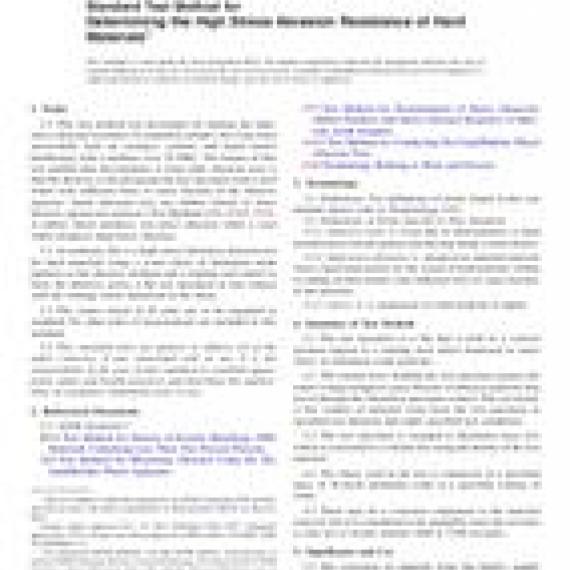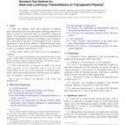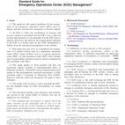No products
ASTM B611-13
ASTM B611-13 Standard Test Method for Determining the High Stress Abrasion Resistance of Hard Materials
standard by ASTM International, 11/15/2013
Full Description
1.1This test method was developed for ranking the high-stress abrasion resistance of cemented carbides, but it has been successfully used on ceramics, cermets, and metal matrix hardfacings with a hardness over 55 HRC. The feature of this test method that discriminates it from other abrasion tests is that the abrasive is forced against the test specimen with a steel wheel with sufficient force to cause fracture of the abrasive particles. Some abrasion tests use rubber wheels to force abrasive against test surfaces (Test Methods G65, G105, G75). A rubber wheel produces low-stress abrasion while a steel wheel produces high-stress abrasion.
1.2In summary, this is a high-stress laboratory abrasion test for hard materials using a water slurry of aluminum oxide particles as the abrasive medium and a rotating steel wheel to force the abrasive across a flat test specimen in line contact with the rotating wheel immersed in the slurry.
1.3The values stated in SI units are to be regarded as standard. No other units of measurement are included in this standard.
1.4This standard does not purport to address all of the safety concerns, if any, associated with its use. It is the responsibility of the user of this standard to establish appropriate safety and health practices and determine the applicability of regulatory limitations prior to use.


































